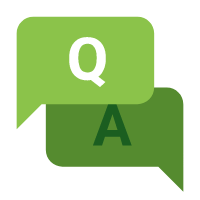Sphenopalantine ganglion block/stimulation
What is The Sphenopalatine Ganglion?
The sphenopalatine ganglion (SPG) is a collection of nerve cells located deep in the face. SPG is closely associated with the facial nerve and trigeminal nerve, which is the main nerve involved in headache disorders. It contains autonomic nerves (sympathetic and parasympathetic) and sensory nerves. In the SPG, these autonomic nerves supply the lacrimal glands (which produces tears) and the inner lining of the nose and sinuses (which produces nasal discharge or congestion).
What is The Role of The Sphenopalatine Ganglion in Headache Disorders?
The SPG has connections to the brainstem (where cluster and migraine attacks may be generated) and to the meninges (coverings of the brain) by the trigeminal nerve. Inflammation and opening of the blood vessels around the meninges occur, which activate pain receptors that send pain impulses through the trigeminal nerve, eventually to the sensory area of the brain, and are perceived as pain. In migraine and cluster headache, nerves carrying these pain signals pass through the SPG, with some making connections to the autonomic nerves. This explains why in cluster headache, and sometimes in migraine, we see autonomic features including tearing of the eyes and nasal congestion or discharge.
What is a Sphenopalatine Ganglion Block?
In an SPG block, an anesthetic agent is administered to the collection of nerves in the ganglion.
What Can SPG Blocks Treat?
- Cluster headache
- Migraine
- Hay fever
- Sinusitis
- Vasomotor rhinitis
- Dry eyes
- Eustachian tube dysfunction
- Trigeminal neuralgia
- Herpes zoster
- Paroxysmal hemicrania
- Cancer of the head or neck
- Facial pain that is atypical
- Complex regional pain syndrome (CRPS)
- Temporomandibular disorder
- Nasal contact point headache
How is SPG block/situation performed?
There are two popular ways to perform SPG blocks/stimulation. In the first one, doctors indirectly access the SPG from the nose. The energy of laser or local aesthetics needs to cross the nasal membrane to reach the nerve. This method is popular because it can be performed with minimal training. In the other method, the SPG block performed in the operating theatre with sedation. The local anesthetic agent is delivered accurately. However, this method requires day procedure hospital admission and sedation, which involves more risks.
How do we do it differently?
We use needles to stimulate/block the SPG directly without sedation. Patients can tolerate the procedure well without the aftercare of sedation. The relief of symptoms is also quicker.
What are the risks?
The risks of the procedure are typically minimal. They include discomfort during and after the procedure, a numb sensation when swallowing, minor bleeding and light-headedness. These side effects typically resolve within minutes to a few hours. There is a very small risk of seizures, infection and allergic reactions.














